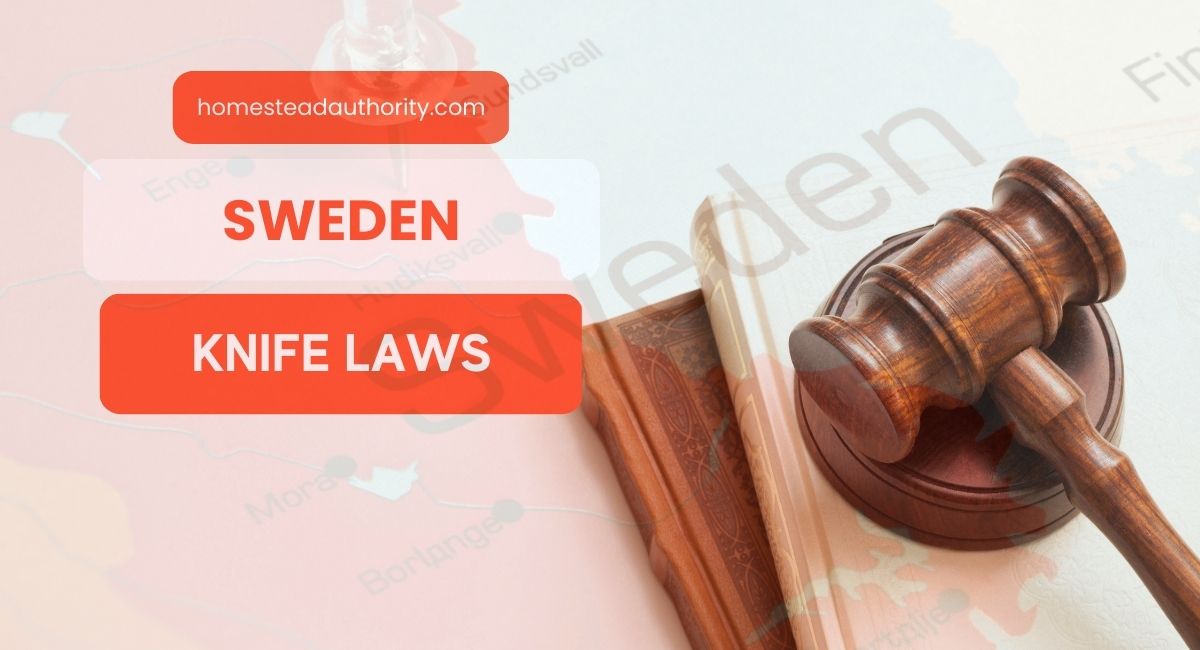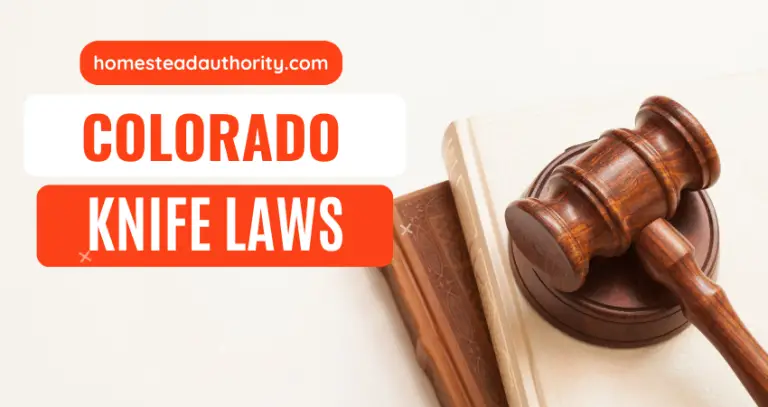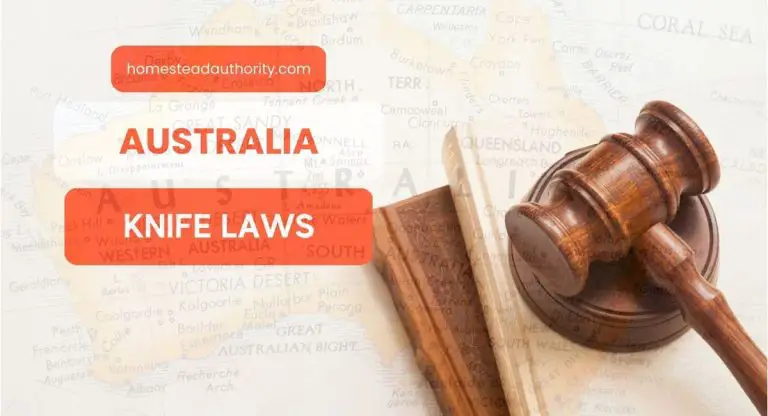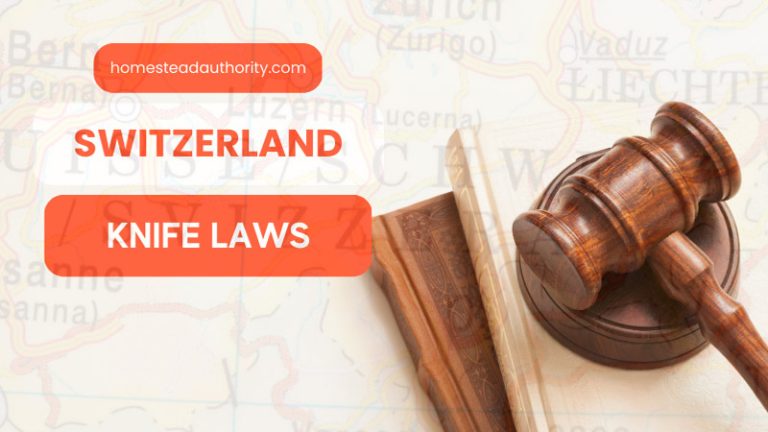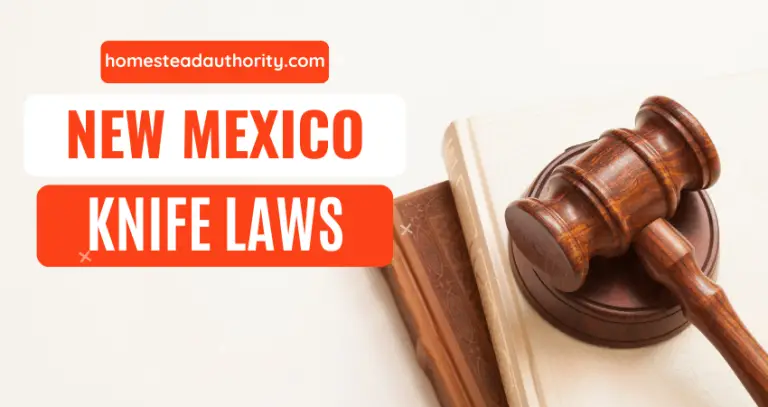A Detailed Guide To Sweden Knife Laws
Sweden is one of the countries that prioritized minors when it comes to the law. Therefore, in Sweden knife laws, minors are highly encouraged not to own a knife or sell them. Nevertheless, there is much more information that Sweden’s official police website gave us apart from the official laws.
And who knows better than a police officer who is the most active for citizens’ safety, right? So dive in deep with us where we cover every law there is to knives. We will cover illegal knives, transfer of knives, importing as well as what size knife is legal to carry in Sweden, and much more.
So without any further ado, let’s get started.
Highlights
The highlight section will help you gain a firm grasp of the things we are going to talk about. Here it is;
- Switchblade knives are highlighted as illegal carry.
- No knives, stabbing weapon, or cutting knives are allowed in public places.
- A knife in school and a knife in a vehicle are prioritized as illegal.
- Exceptions are present for professional use.
- Any dangerous knife must need a permit for being imported.
- Selling or transferring dangerous knives to someone under 21 is illegal.
- Pocket knives, utility knives, and swiss knives are not considered as knives and are allowed to be carried.
- Penalties range from 6 months to 2 years depending on the crime.
Illegal Knives In Sweden
There are no knives that you cannot bring to Sweden. However, the purpose of the knife plays a crucial role in being legal.
As per Sweden police, you are not allowed to carry a knife, a stabbing weapon, a weapon that is capable of penetrating. Additionally, any other dangerous objects with you in public places.
Well, don’t worry about the knives that you should absolutely be worried about possessing. The Sweden police did provide us with a list. Here it is;
- Butterfly knives (balisong)
- Spring-assisted knives (switchblades)
- Karate sticks
- Swords
- Brass knuckles
- Stilettos
- Sabres
- Ninja stars/throwing stars
These are the types of knives that are considered to be dangerous in Sweden. Hence, possessing or carrying them without a valid reason will lead you to court.
Banned Areas for Knives
As already mentioned, you cannot carry a knife in public places. However, there are places that the law mentioned specifically and not kept under the public place category. Therefore, you have to pay special attention to those places and make sure you never make the mistake of carrying one in there.
As per Law (1988:254) § 1;
Knives, other stabbing and cutting weapons and other objects that are suitable for use as weapons in crimes against life or health may not be possessed in a public place, within a school area where primary or secondary education is conducted, or in a vehicle in a public place.
Law (1988:254) on the prohibition of knives and other dangerous objects
Ministry: Ministry of Justice L4
Issued: 1988-05-05
Change introduced: empty SFS 2022:608
Effective: 1988-06-01
As you can see, in schools and carry a knife in car in Sweden is treated quite specially. Thus, you should avoid these places if you are carrying any knives.
On the other hand, public places also include and are not limited by;
- Movie theatres
- Restaurant
- Parks
- Museums
- Sports arenas
- Hospitals
Law for Switchblades in Sweden
The knife laws in Sweden also took switchblades into a different category, where it is banned for minors. If you are under 21, you shall not possess or carry a switchblade with you. The Law (1988:254) § 1, third paragraph, states;
Stabbing weapons or knives that are designed so that the blade or blade can be quickly folded or pushed out of its shaft (spring daggers or spring knives) may not be possessed by persons under the age of 21
Law (1988:254) on the prohibition of knives and other dangerous objects
Ministry: Ministry of Justice L4
Issued: 1988-05-05
Change introduced: empty SFS 2022:608
Effective: 1988-06-01
If you are not certain of what switchblades are, don’t worry. They are just normal knives but with a spring mechanism involved, which requires a push mechanism to get the blade out.
Nevertheless, the triggering technique is not limited to push only. It can be anything that involves a trigger in the spring.
Special Regulations
What if you are a chef at a school in Sweden and may require special types of knives for your profession? What shall you do then? Thankfully, Sweden’s regulations have taken it into account, and you no longer have to worry about it.
As per the Law (1988:254) § 1, second paragraph;
Knives, other stabbing and cutting weapons and other objects that are suitable for use as weapons in crimes against life or health may not be possessed in a public place, within a school area where primary or secondary education is conducted, or in a vehicle in a public place.
The prohibition in the first paragraph does not apply if, according to special regulations, the object is part of equipment for a certain service or assignment or if the possession is otherwise considered to be justified, taking into account the nature of the object, the owner’s needs and other circumstances.
Stabbing weapons or knives that are designed so that the blade or blade can be quickly folded or pushed out of its shaft (spring daggers or spring knives) may not be possessed by persons under the age of 21. Law (2000:148).
Law (1988:254) on the prohibition of knives and other dangerous objects
Ministry: Ministry of Justice L4
Issued: 1988-05-05
Change introduced: empty SFS 2022:608
Effective: 1988-06-01
As you can see, the 1st paragraph doesn’t apply to you if you have a valid reason. Certainly, being a security guard or a chef at school may require a knife to be carried, and it’s absolutely fine. You can do that without worrying about the law, which states public carry is prohibited.
What Length Of A Knife Can I Carry In Sweden?
As there’s no permission to carry a knife in the first place, the question of legal knife length shouldn’t be brought up. The Sweden law didn’t mention any length as carrying it is illegal.
However, you might have expected to know the allowed knife length for non-public places. Unfortunately, the length is just not there.
Nevertheless, from our side, we can tell you never to carry a knife without a purpose in non-public places as well. Even a 10 inches knife might get allowed if you can show a reason. On the other hand, a 2 inches knife can also get you in jail if no purpose is shown.
Law for Importing Knives
As per Sweden police, a permit is needed in order to import dangerous goods such as switchblades or any dangerous knife in the list above. Nevertheless, sabers and swords are an exception.
Only items meant to be kept as part of a collection of knives or used for a similar purpose may be imported with permission.
The police will evaluate and make a decision regarding the permit or license request. However, please be aware that clearing the goods with Swedish Customs may also be necessary.
Law for Selling Or Transferring Knives
As mentioned before, Sweden’s laws greatly prioritize minors’ safety. Thus, strict law takes place when it comes to selling or transferring dangerous weapons listed above. Making all kinds of dangerous knives be banned from handing over to minors.
As per Law (1990:413) § 2, Giving spring knives or knuckle irons to anybody under the age of 21 or keeping them on hand for sale is prohibited. Nevertheless, here’s the law in detail;
Transfer of Dangerous Objects
Brass knuckles, ninja stars or other items particularly suited for use as a weapon for a criminal threat against someone’s life or health, as well as spring-assisted knives or spring-stiletto knife, may not be handed over to persons under the age of 21 nor marketed for sale.
Therefore it is forbidden to sell all types of especially dangerous items according to the examples in the above list. It is also forbidden to transfer (for example, give or send the items to any persons under 21 years old). If you give or sell dangerous items to a person under 21 years old, you can be convicted of a crime. In addition, if a person under 21 years old buys or receives such an item they can be convicted of a crime.
Police.se. (n.d.). Knives and other dangerous objects. Retrieved April 30, 2023
Legal Knives in Sweden
When it comes to utility knives, you don’t have to give them second thoughts. It’s definitely fine to have a swiss army or pocket knife for your daily needs in your pocket.
Additionally, they are not capable of stabbing so doesn’t qualify as dangerous or ‘actual knives’.
Penalties For Violating The Knife Laws in Sweden
The penalties for violating the knife laws here in Switzerland can range from 6 months of imprisonment to a maximum of 2 years.
It depends on which law you broke. So here’s what the punishment looks like for breaking each of them;
- Intentionally bringing a knife in public or handing dangerous knives to someone under 21 shall be imprisoned for a maximum of a year.
- If the act has been committed through negligence, the sentence is a fine or imprisonment for a maximum of six months.
- If the law broken is serious then the penalty should go up to 2 years of imprisonment.
Additionally, the Sweden law also informs us about the basis on which they consider the seriousness of the crime. Here’s what Section 3 § 4 says about assessing seriousness;
If a crime referred to in the first paragraph is serious, the sentence is to imprisonment for a minimum of six months and a maximum of two years. When assessing whether the crime is serious, it must be taken into particular consideration
Law (1988:254) on the prohibition of knives and other dangerous objects
- the object has been held in a context where it can be feared that it will be used in the event of a criminal attack on someone’s life, health or personal security,
- the object has been of a particularly dangerous nature,
- the possession, transfer or sale has concerned several objects, or
- the act otherwise has been of a particularly dangerous nature.
Ministry: Ministry of Justice L4
Issued: 1988-05-05
Change introduced: empty SFS 2022:608
Effective: 1988-06-01
Exceptions of Knife Law in Sweden
You can expect any country to make exceptions for their soldiers. Well, Sweden has considered more than just soldiers for providing exceptions to penalties.
They are;
Examples of exceptions to the prohibition:
(when having of such on one’s person may be considered justified or appropriate)Police.se. (n.d.). Knives and other dangerous objects. Retrieved April 30, 2023
- A military soldier bearing a knife with their uniform
- Craftsmen who are using a knife with their work
- Mushroom pickers carrying an appropriate knife during hiking
- Normal use of a pocket knife or multi-tool/Swiss army knife
Stabbing Death Rate In Sweden
Sweden may be on the top 50 list in the homicide rate. Yet, when it comes to the stabbing death rate, they are not even in the top 100.
It’s certainly due to them following the knife laws properly and restricting citizens from carrying dangerous knives.
Nevertheless, here’s a chart of what the death rate in Sweden looks like;
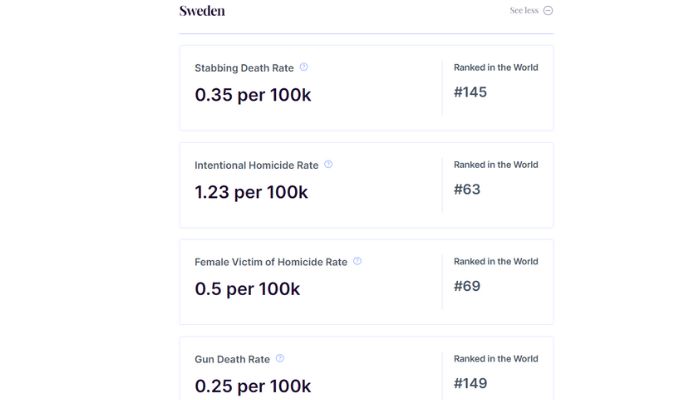
Conclusion
To conclude, Sweden knife laws are quite decent for anyone. They allow utility knives but strictly prohibit dangerous knives.
Yet, if you can show your profession related to the banned knives, you are given the authority to use them without any concerns. How good can it be?
Additionally, the minors will be kept safe by not allowing them to own any dangerous knives. There’s a reason why Sweden has such a low stabbing death rate of 0.35 per 100k. It’s the ideal laws that help the country stay within limits.

